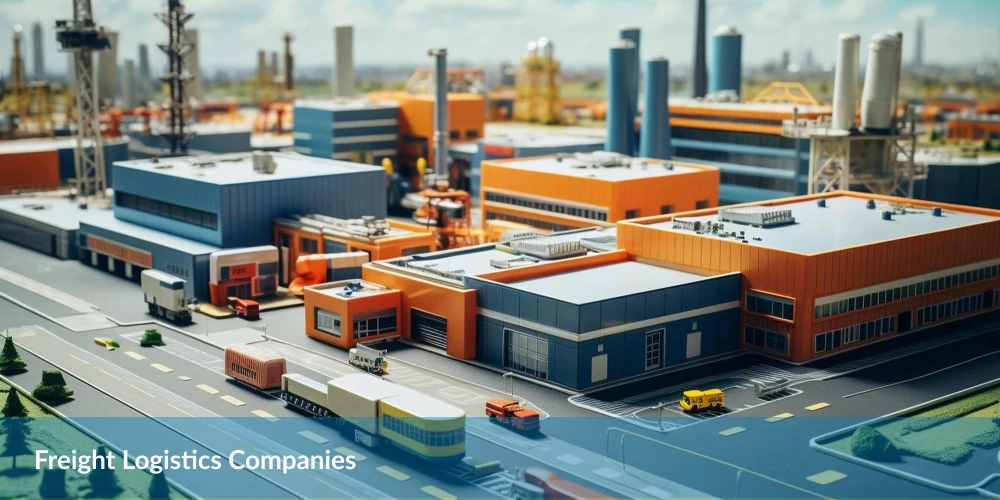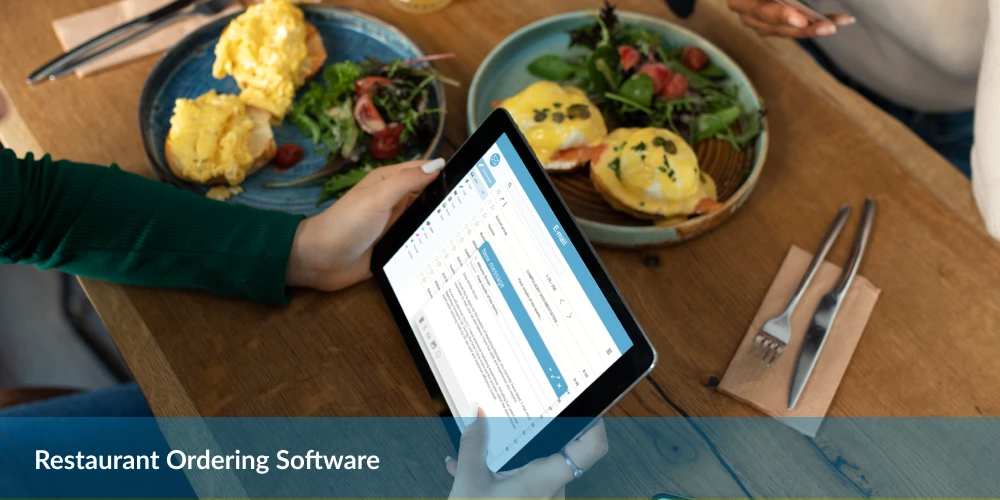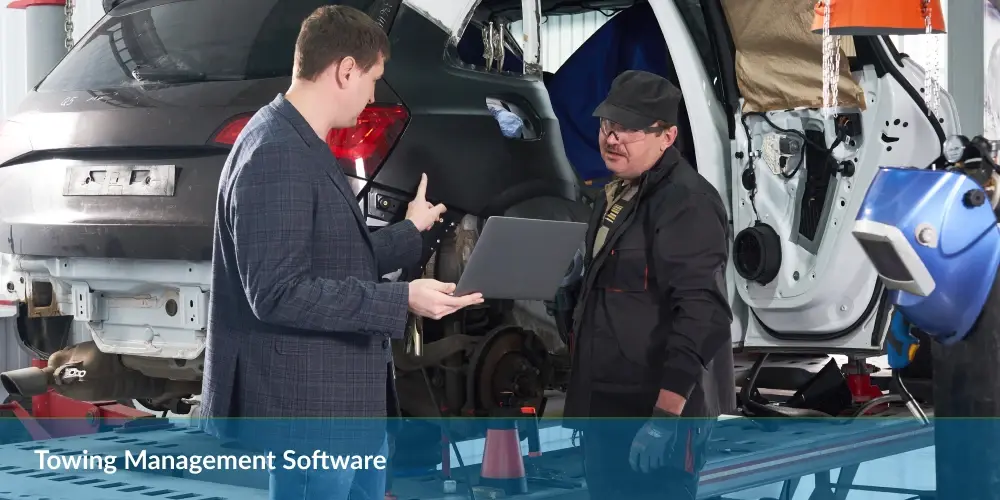Table of Contents
Does your current logistics management strategy meet the needs of your burgeoning e-commerce business? Are you prepared to handle the challenges and opportunities that lie ahead? If so, then this blog will find you well.
In the accelerating world of commerce, the movement of goods is the critical lifeline connecting businesses with their customers. Logistics management takes center stage in ensuring this flow is seamless, efficient, and meets the expedited demands of modern consumption. From traditional models to the sophisticated requirements of e-commerce, on-demand logistics adapts and evolves, presenting unique challenges and opportunities.
The digital marketplace has reshaped logistics, demanding innovative approaches to manage inventory, delivery, and customer satisfaction. Understanding the intricacies of logistics management is not just a necessity but a powerful tool for businesses to forge a robust link with their suppliers and a lasting relationship with their clientele.
Let’s explore the logistics landscape, where every strategy implemented and every technological embrace upholds the pillars of successful enterprise functionality.
The Pillars of Logistics Management
A robust logistics management system lies at the core of efficient business operations. Effective logistics is instrumental to maintaining a competitive edge, ensuring the seamless movement of goods, and satisfying customer demands.
Let’s understand the fundamental pillars that uphold good logistics management for businesses.
Inventory Management: A Balancing Act
Inventory management is critical in Logistics Management. It’s all about striking the perfect balance between product availability and inventory costs. Aiming for just-in-time inventory can minimize overstocking and reduce holding costs, leading to a more streamlined financial framework for businesses.
- Ensuring product availability without overstocking
- Mitigating stockouts and overstock scenarios
Supply Chain Optimization: The Efficiency Engine
Optimizing the supply chain is akin to fine-tuning an engine for peak performance. It entails enhancing every part of the logistics process, from working with suppliers to delivering products to customers, thus ensuring efficiency and reducing operational bottlenecks.
- Streamlining operations from suppliers to customers
- Improving coordination among supply chain partners
Order Fulfillment Strategies: Meeting Customer Expectations
In today’s fast-paced market, order fulfillment has become more than delivering goods. It’s an integral aspect of customer satisfaction. Effective logistics management incorporates strategic planning to ensure speed, accuracy, and cost-effectiveness in order fulfillment.
- Speed, accuracy, and cost considerations in order fulfillment
- Implementing responsive logistics to adapt to market changes
Developing Logistics Plans for E-commerce
The rise of e-commerce has revolutionized how businesses approach their logistics plans. The successful delivery of products in the digital age hinges on the strength of these strategies. E-commerce businesses, in particular, require detailed and dynamic logistics plans to keep up with the fast-paced online market and meet customer expectations for rapid delivery and excellent service.
Distribution Network Design: Crafting Your Logistics Map
A well-thought-out distribution network design is at the core of every effective e-commerce logistics plan. It involves strategically placing warehouses and fulfillment centers in locations optimized for both cost efficiency and speed of delivery. By creating a comprehensive logistics map, businesses can reduce transportation costs, shorten delivery times, and enhance customer satisfaction.
- Assessing geographic locations of suppliers and customers for optimal warehouse placements.
- Segmenting inventory based on product velocity and regional demand patterns.
- Evaluating transportation linkages and infrastructure to support network requirements.
Technology Integration: The Backbone of Modern Logistics
In the digital transformation era, the integration of cutting-edge technologies is the backbone of modern logistics management systems. Implementations of Warehouse Management Systems (WMS), Transportation Management Systems (TMS), and Enterprise Resource Planning (ERP) are critical for automating processes and enhancing the efficiency of logistics operations.
- Leveraging a WMS for real-time inventory tracking and optimized warehouse operations.
- Utilizing a TMS to streamline route planning and freight management.
- Adopting an ERP to integrate business processes, enhancing decision-making and resource allocation.
Pro Tip:
Embrace the synergy of WMS, TMS, and ERP systems for seamless logistics management, optimizing efficiency and decision-making in the digital age.
Execution of Logistics Operations
The success of logistics management lies in the efficiency of warehouse operations. As the central node in the logistics network, warehouses must operate smoothly to ensure the prompt distribution of goods. Inventory management, order fulfillment, and warehouse layout optimization are crucial components that demand meticulous attention.
- Inventory Management: Tracking stock levels in real-time prevents overstocking and stockouts, ensuring a balanced inventory.
- Order Fulfillment: Efficient picking, packing, and shipping processes enhance customer satisfaction through timely deliveries.
- Warehouse Layout Optimization: Strategically designed layouts minimize handling time and expedite the flow of goods from storage to shipping.
Implementing these best practices for managing warehouse operations effectively is not just about organization; it’s a strategic move to elevate your business’s logistics framework.
Transportation Management: Moving Goods Smartly
Transportation management plays a pivotal role in logistics management. Selecting the right modes of transport and partnering with efficient carriers ensures that products move through the supply chain with speed and cost efficiency. Factors influencing this choice include the nature of the product, delivery speed requirements, and cost constraints.
- Mode Selection: Whether it’s air, sea, rail, or road, each mode has its advantages and limitations that must align with business goals and customer expectations.
- Carrier Partnerships: Building strong relationships with reliable carriers can improve tariff negotiations and better handling of goods.
An adept transportation strategy anticipates challenges and leverages technology to enable tracking and efficient routing, hallmarks of smart logistics management.
Last-Mile Delivery Solutions: The Final Step
The last-mile delivery is the logistics journey’s final and often most challenging leg. It’s where customer satisfaction is most acutely felt; optimizing this phase is paramount.
- Innovative Delivery Options: Flexibility in delivery options, like local pick-up points or time-specific slots, can greatly enhance customer convenience.
- Route Optimization: Technology that calculates the most efficient delivery routes saves time and reduces fuel consumption.
- Real-Time Communication: Keeping customers informed about the status of their delivery fosters trust and improves service perception.
By adopting innovations and strategies for efficient last-mile deliveries, businesses can ensure a positive end to the customer’s purchasing journey, encouraging repeat business and long-term loyalty.
Advanced Considerations in Logistics
As businesses scale and their operations evolve, various advanced considerations are integral to a mature logistics management strategy. These factors allow for more efficient operations and the agility to respond to market demands and challenges in a dynamic business environment.
Demand Forecasting: Predicting to Prepare
Demand forecasting is crucial in honing the responsiveness of logistics management systems. Businesses can create predictive models that refine inventory management and optimize supply chain operations by leveraging historical data, AI models, and market analysis. Accurate forecasting enables enterprises to reduce wasted resources and fulfill customer orders more proficiently, cultivating trust and satisfaction.
Leveraging Data for Accurate Demand Predictions and Planning
Data analytics plays a pivotal role in the pursuit of precise demand forecasting. With various available sources, companies can synthesize data from multiple inputs, including seasonal trends, promotional campaigns, and consumer behavior, to form a cohesive prediction model. This comprehensive approach to data utilization directly translates into more effective logistics management planning.
Real-Time Data Analytics in Logistics: Insights That Drive Actions
Real-time data analytics has become a game-changer for logistics management software. By tapping into real-time insights, businesses can make dynamic decisions that enhance the efficiency of logistics operations. This could involve route optimization for delivery vehicles, immediate identification of bottlenecks, or adjustments in supply chain practices to reduce lead times and costs while improving service quality.
Global Logistics Challenges for E-commerce: A World of Opportunities
- Cross-Border Complexities: Operating globally introduces an additional layer of logistical complexity. From navigating diverse customs processes to managing international shipping protocols, businesses must maintain a seamless supply chain.
- Ensuring Compliance: Keeping abreast of international trade regulations and ensuring adherence is paramount to avoiding disruptions. It can range from trade tariffs to environmental and safety standards, necessitating a sophisticated understanding of global logistics networks.
Understanding these advanced logistics management considerations and integrating their solutions positions e-commerce businesses to survive and thrive in the global market. Implementing a logistics strategy that accounts for these sophisticated elements is not an option. Still, it is necessary for businesses aiming to maintain a competitive edge in today’s digital economy.
Embracing Future Trends in Logistics Management
Sustainable Logistics Practices: Going Green
In the ever-evolving landscape of logistics management, sustainable practices are becoming increasingly important. Businesses eager to maintain competitiveness must consider environmental impacts and elevate their efforts toward going green. Adopting these practices protects the environment, enhances brand reputation, and meets the growing consumer demand for eco-friendly operations.
- Minimizing carbon footprint through the use of alternative fuels and efficient route planning.
- Investing in green technologies such as electric vehicles and solar-powered warehousing.
- Optimizing packaging to reduce waste and utilizing recyclable materials.
Cross-Border Logistics for E-commerce: Expanding Horizons
With e-commerce becoming a global playing field, cross-border logistics unlock the gate to international markets and customer bases. Effective management of cross-border logistics is key to capitalizing on the growth of international e-commerce. It encompasses understanding and navigating customs, tax regulations, and local market preferences.
- Harmonization of standards to simplify international shipping processes.
- Leveraging local partnerships for enhanced distribution capabilities.
- Implementing scalable solutions to adapt to different markets and demand volumes.
Technology Adoption: The Future Is Now
Technological change in logistics management is accelerating, and staying up-to-date with emerging technologies is not just an advantage but a necessity. Early adoption can streamline operations, enhance accuracy, and ultimately save costs. The businesses at the forefront of these advancements will define industry standards and customer expectations in the future.
- Integrating advanced data analytics to forecast demand and optimize stock levels.
- Utilizing automation and robotics for faster and more reliable order fulfillment.
- Exploring the potential of blockchain for secure and transparent supply chain operations.
Enhancing Clientele Service Through Logistics
Optimal logistics management goes beyond the mere transport and delivery of products; it’s a pivotal element in fostering outstanding customer service and loyalty. In the digital era, the seamless integration of logistics and client services is a definitive competitive edge for businesses aiming to thrive.
Customer Service in Logistics: Beyond the Delivery
The responsibility of logistics management continues beyond the point of delivery. It encompasses a comprehensive architecture to ensure paramount customer satisfaction. High-caliber logistics management services acknowledge that every step of the logistical process, from order fulfillment to doorstep delivery, is crucial in improving the overall customer experience.
Improving Customer Service through Transparent and Reliable Logistics
Transparency is the backbone of trust between a business and its customers. By implementing reliable logistics management systems, businesses can provide customers with necessary visibility into the journey of their orders. Clear communication regarding shipping times, potential delays, and real-time tracking information reinforces customers’ trust and loyalty, ultimately enhancing their overall service experience.
Reverse Logistics and Returns Management: Handling the Inevitable
An often-overlooked aspect of logistics is reverse logistics, which involves returns management. By creating a seamless returns process, businesses can significantly reduce customer inconvenience. Efficient reverse logistics management systems ensure that returns, replacements, and refunds are handled proficiently, bolstering customer confidence and retention.
Creating a Seamless Returns Process to Enhance Customer Retention
Creating a hassle-free returns process is indispensable for maintaining customer retention rates. Simplifying the steps involved, providing clear instructions, and promptly addressing any concerns are key to delivering an experience that convinces customers to remain loyal to the business.
Communication and Service: Keeping Clients Informed
In logistics, communication is a foundational pillar. Meticulous attention to keeping clients informed fosters a sense of security and control over their transactions. Offering real-time updates and maintaining open communication channels can transform a logistical operation from merely functional to exceptional and significantly amplify customer satisfaction.
The importance of implementing an authoritative, efficient, and customer-focused logistics management strategy cannot be overstated. Businesses poised to succeed recognize that exceptional logistics services contribute substantially to enhanced client service and, ultimately, to a more resilient and flourishing business model.
Key Takeaways:
- Achieve a delicate balance between product availability and inventory costs through just-in-time inventory practices, minimizing overstocking. In contrast, ensuring products are readily available to meet demand.
- Enhance every aspect of the logistics management process, from supplier collaboration to customer delivery, to ensure efficiency and reduce operational bottlenecks, ultimately improving overall supply chain performance.
- Craft detailed and dynamic logistics plans tailored for e-commerce to meet online customers’ rapid delivery expectations and service demands. It includes strategic distribution network design and technology integration.
- To survive and thrive in the competitive digital economy, leverage data analytics for accurate demand forecasting, embrace real-time insights for dynamic decision-making, and navigate global logistics challenges.
- Elevate customer satisfaction through transparent and reliable logistics services, including optimizing last-mile delivery, implementing efficient returns management, and maintaining open communication channels to enhance service experience and foster long-term loyalty.
Conclusion
Throughout this guide, we have explored how logistics management forms the backbone of every successful e-commerce business. From the initial understanding of its core principles to the in-depth exploration of planning, execution, and future trends, we’ve underscored the essential facets that enable businesses to thrive in a digital marketplace.
The e-commerce landscape and logistics are constantly evolving. How goods are stored, handled, and delivered today may need to be updated tomorrow. Therefore, businesses must keep their fingers on the pulse of innovation, ensuring their operations adapt to new technologies, changing consumer expectations, and emerging market trends.
As we conclude, let us reiterate that logistics should always be considered in e-commerce strategy. Instead, it should be viewed as a potent tool that, when leveraged correctly, can provide a competitive edge and significantly contribute to overall success. Proper logistics management services streamline operations and enhance customer satisfaction.
To ensure your logistics framework remains adequate and ahead of the curve, schedule a consultation with NetworkON’s logistics experts today.
Visit our website and attain a tailored plan to optimize your operations, reduce overhead, and enhance your customer experience.
Frequently Asked Questions
Logistics management ensures timely delivery, efficient inventory management, and customer satisfaction, all of which are vital for success in the digital marketplace.
The key pillars include inventory management, supply chain optimization, order fulfillment strategies, technology integration, execution of logistics operations, and transportation management.
E-commerce businesses can optimize their distribution network by strategically placing warehouses, segmenting inventory, evaluating transportation linkages, and leveraging technology for efficient logistics operations.
Technology, such as Warehouse Management Systems (WMS), Transportation Management Systems (TMS), and Enterprise Resource Planning (ERP), automates processes, optimizes operations, and enhances decision-making in logistics management.
Challenges include navigating diverse customs processes, managing international shipping protocols, ensuring compliance with trade regulations, and harmonizing standards for cross-border operations.
Logistics management contributes to customer satisfaction by ensuring timely deliveries, transparent communication, efficient returns management, and overall reliability in the delivery process.





0 Conversations